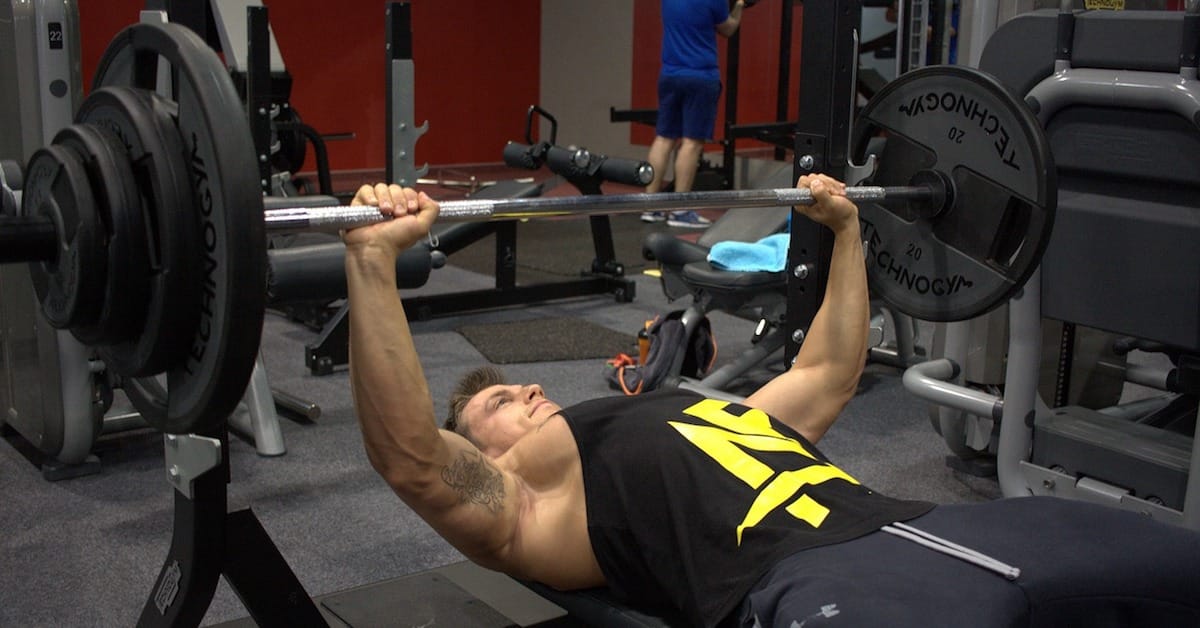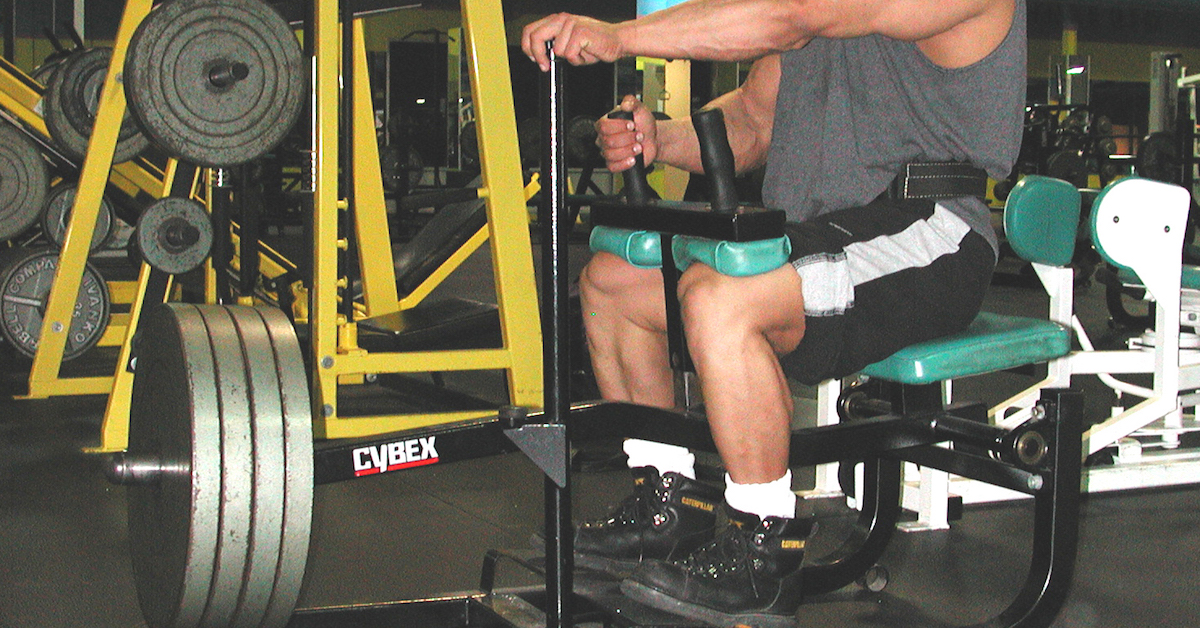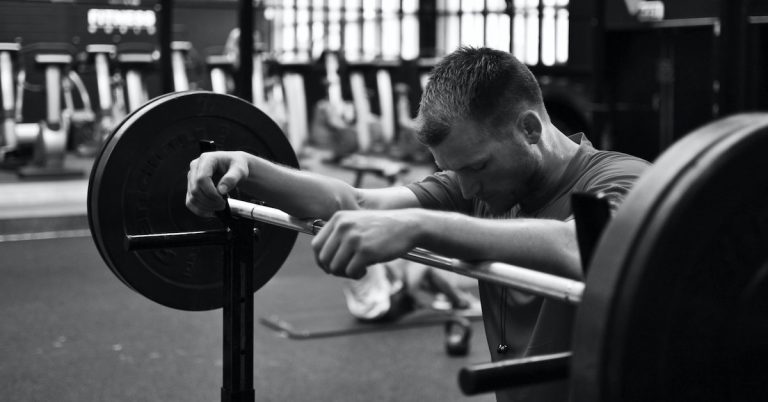Calves are stubborn. They’re like that boxer with an iron chin. If you want some knockout growth, you need to hit them hard with methods that work, hit them from all angles, and hit them often. Only then will you win the battle with your fiercest foe. Let’s take a look at what your training camp will entail leading up to the big day!
Methods That Work
If you want to build massive calves, there are many excellent training methods available, including:
- Antagonist supersets, where you pair ankle extension with flexion, as outlined in my article Supersets for Super Results.
- Contrast supersets, where you pair slow eccentric calf raises with explosive jumps using a barbell, hex-bar, dumbbells, or a sandbag, or combine slow and fast speeds in one movement, as I discuss in Time To Explode!.
- Another contrast superset variation, where you pair paused one-leg calf raises in full range of motion with short, quick hops, as mentioned in this Q&A post.
- Tri-set methods, like those featured in my book The Elite Trainer or my column The Cat’s Lair, which involve a different rep bracket and tempo for each exercise to target high-, medium-, and low-threshold motor units. Read more about it here.
- Drop sets, as discussed in Pop ‘Em Out Muscles.
Another effective method, inspired by Nelson Montana’s The Bodybuilding Truth, involves a form of rest-pause training—essentially one long set with interrepetition rest intervals. The goal is to perform 75–100 reps using a 20RM load. If used correctly, this can be done every workout. We’ll incorporate this method into our training camp.
Hit Them From All Angles
When it comes to calf training, most people in the gym are creatures of habit. How can you expect different results if you keep doing the same thing over and over?
For example, when you do standing calf raises, do you ever vary your stance? Or are your feet always hip-width apart? Do you ever do seated calf raises one leg at a time? Do you train the tibialis anterior, the muscle on the front of your lower leg?
For maximum growth, you need to hit your calves from all angles—front and back, wide and close stance, feet rotated out and in, unilateral and bilateral, and from seated, standing, and bent-over positions.
Hit Them Often
Success leaves clues. If you want well-developed arms and shoulders, train like a gymnast. For glutes and hamstrings, train like a sprinter. And as I expose in The Answer for Massive Calves, bodybuilders can build serious calves if they train like dancers.
Dancers perform repetition after repetition of bodyweight calf raises almost daily. The high volume, combined with frequent training, results in monstrous calves. Train your calves once a week at the end of your workout? No chance of growth. Train them at the beginning of every workout? They’ll get the message!
Don’t worry about overtraining. In The Variable Recovery Training System, I explain that smaller muscle groups like calves and forearms recover quickly and can handle frequent training, especially if they’re lagging. The key is to use an appropriate load and tempo—avoid going too heavy or emphasizing the eccentric (lowering) phase, as that leads to excessive muscle damage and soreness, prolonging recovery. A muscle can take a “beating” almost every day if you stimulate it, not annihilate it!
Training for the Big Show
Here’s a great calf plan for your next routine. Use this 3-day rotation:
- Day 1 – Standing Calf Raises
- Day 2 – Seated Calf Raises
- Day 3 – Seated Tibialis Raises
You’ll use the rest-pause method mentioned earlier. Perform one extended set of 75–100 reps at the beginning of every workout.
How It Works:
- Load a calf/tibialis raise machine with a weight you’d normally use for a 20-rep set.
- Start the set and do as many reps as possible.
- Once you hit failure, rest 10 seconds, then continue.
- Repeat until you reach 75 reps (it may take only a few reps per attempt toward the end—just keep going).
It should take no more than 4–5 minutes to complete.
Progressive Overload Plan:
- Workout #1 – 75 reps
- Workout #2 – 80 reps
- Workout #3 – 85 reps
- Workout #4 – 90 reps
- Workout #5 – 95 reps
- Workout #6 – 100 reps
Once you hit 100 reps, increase the weight to your new 20RM load and start again at 75 reps.
This 3-day rotation can be used with any whole-body or split routine. Just make sure to start every workout with one of these calf movements, cycling through them each session.
Recovery Considerations
A word of warning—although the intensity isn’t high, the volume is. Expect soreness, especially in the first week. To manage this, I recommend:
- A high dose of BCAAs during workouts.
- Daily restoration methods like:
- Self-massage (I use The Stick for this).
- Contrast showers (alternate hot and cold water on your calves).
- Salt baths.
- Arnica cream (enhanced with a laser pointer, as I mention in 5 Radical Ways to Stop Hurting).
I go over several of these recovery techniques in my book Mass Explosion.
There you go! If you want to transform your calves into CALVES, hit them hard from all angles and hit them often. And if you really want to boost results, there’s something in your medicine cabinet that might add an inch to your calves during training. I’ll reveal what it is next time!

Maximize Your Muscle Growth: Choose a Split Routine!
If your goal is to maximize muscle growth, focusing on fewer muscle groups per session might be your best bet.

The Rest-Pause Method for Massive Calves
Calves are notoriously challenging to develop, but after decades of trial and error, I’ve discovered a foolproof method to make

My Favorite Leg Finisher
Everything in context! In the video below, I’m squatting with 225 pounds. It might not look like much weight, but
follow
Error: No feed with the ID 2 found.
Please go to the Instagram Feed settings page to create a feed.
